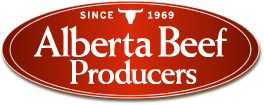Source: Mississippi State University Extension
Congenital defects are abnormalities present at birth. They are abnormalities of structure or function that can result in calf losses before or after birth. These defects can be caused by genetics, the surrounding environment, or...
Source: Beef Genomic Prediction Trial
About the project:
The beef genomic prediction trial project is a pilot project funded by Agriculture and Agri-Food Canada (AAFC) in collaboration with Livestock Gentec, University of Alberta and Delta Genomics Edmonton. The objective of the project...
Source: Ontario Ministry of Agriculture, Food and Rural Affairs
FACT SHEET written by: Joanne Handley - Beef Cattle Geneticist/OMAFRA
Breed Comparisons
The environments and resources available to raise beef cattle are as varied as the breeds themselves.Table 1 groups breeds into biological...
Source: American Simmental Association
A qualitative trait is a trait that can be described as a category. For example, black or red coat color, horned or polled, coat color dilution are all qualitative traits. Qualitative traits are frequently controlled by...
Source: Alberta Agriculture and Forestry, http://www.agric.gov.ab.ca/
Improving the feed efficiency of a beef cattle herd can mean big savings for producers. One way to achieve this goal is to select breeding bulls that are naturally feed-efficient, since 80 to 90 per...
Source: Beef Cattle Research Council, www.BeefResearch.ca
Editor’s note: The following is part three of a four-part series that will help you to evaluate different breeding programs, which bulls are optimal for your herd, and how much they’re worth. (See part one and part...
Source: Alberta Agriculture and Forestry, http://www.agric.gov.ab.ca/
Some breeds of cattle are prone to double muscling. These animals have enlarged muscles, giving them the appearance of being the weight lifters of the cattle world! Double muscling in cattle is the result of...
Source: Alberta Agriculture and Forestry, http://www.agric.gov.ab.ca/
Feed costs represent up to 70% of the production costs in a beef operation and it only makes sense that feed efficient cattle should be more profitable. Residual Feed Intake, or RFI is a trait...
Source: Alberta Beef Producer
PROJECT NO.: 0007-126
RESEARCH INSTITUTION: Agriculture and Agri-Food Canada (Lacombe Research Station)
LEAD RESEARCHER: Dr. Al Schaefer
Background:
Winter feed costs can account for up to 75% of operating costs in a cow-calf operation, and can exceed 60% of overall...
Source: Alberta Beef Producers
Wide variation between individual animals.
Changes in diet, environment and other factors will trigger different genetic responses in individual cattle, which may result in some animals that are more feed efficient than others, says Dr. Gordon Murdoch,...









